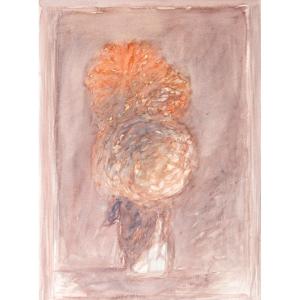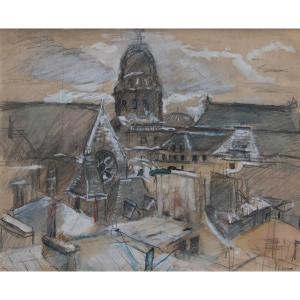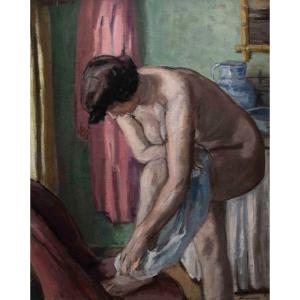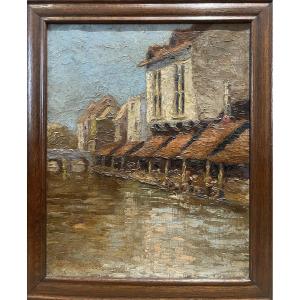In this seascape, Louis Appian displays the full finesse of his sensitivity to landscape. The painting depicts a rocky Mediterranean cove, likely near Martigues. In the foreground, a boat with a lateen sail has been hauled onto the shore. In the background, a wooded coastal strip gently rises toward a village dominated by a Romanesque bell tower, suggesting a locale along the Provençal coastline.
The sun-bleached rocks, dry vegetation, and bright touches on the water and sky convey the warm, diffuse southern light, which the artist captures with remarkable atmospheric refinement.
The only son of painter Adolphe Appian, Louis was born into a privileged artistic environment, immersed from an early age in the landscapes and atmospheres his father so masterfully depicted. In November 1879, at the age of 17, he enrolled at the École des Beaux-Arts in Lyon, in the painting class of Michel Dumas (1812–1885), a pupil of Ingres and staunch defender of academic tradition. The curriculum, still deeply rooted in pure drawing and classical ideals, clashed with the young Appian’s independent spirit.
He quickly rejected his teacher’s authority and vocally opposed the school’s rigidity, expressing a deep desire for artistic freedom: “I want to shake off the academic yoke that stifles me, and I want to go my own way. Why not! I believe in myself.”
Yet it was within this very institution that his talent was first recognized: in July 1880, barely a month after Dumas’ death, Louis Appian was awarded the Prix de Paris, a prestigious distinction given to the most promising student. This prize enabled him to continue his training for two years at the École des Beaux-Arts in Paris.There, he joined the studio of renowned academic painter Alexandre Cabanel, briefly adopting his ambition for grand historical and mythological compositions.
By 1894, Louis Appian had reached a clear maturity in landscape painting: he had mastered technical skills, achieved stylistic independence from his father, and began carving out his own voice within the Lyon art scene. Tragically, his promising career was cut short when he died of tuberculosis on December 11, 1896, at just 34 years old.














































 Le Magazine de PROANTIC
Le Magazine de PROANTIC TRÉSORS Magazine
TRÉSORS Magazine Rivista Artiquariato
Rivista Artiquariato